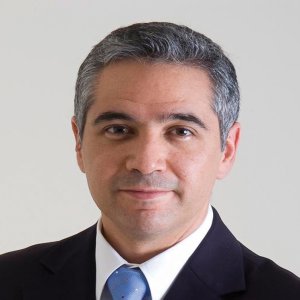Port of Veracruz Sees Automotive as Top Priority

STORY INLINE POST
Q: API Veracruz handles cargo for many industries. How much specific attention is given to the needs of the automotive sector?
A: The port of Veracruz has become the main entrance and exit point for the transfer of cars and auto parts in Mexico. It has solidified this leading position in recent years by transferring 65.6% of the cargo related to the automotive industry. Due to the limitations imposed by Argentina and Brazil on the commercial flow of vehicles, the port actually experienced a decrease in volume last year. However, with the entry of OEMs and the establishment of more assembly lines in Mexico, we expect volumes to increase once again. The port’s main destination areas are the east coast of the US, Europe, and South America, which are all markets that OEMs are keen to tap into. Given the importance of the automotive industry, improving the Port of Veracruz’ infrastructure is high on the agenda. We have taken steps to become the port with the most developed connectivity by establishing more links with Ferrosur and KCSM. The port also has links with 54 maritime routes and 27 major shipping companies operating within them.
Q: How have changes in automotive manufacturing strategies impacted API Veracruz?
A: Given the recent investment boom in the Mexican automotive industry and the ongoing establishment of OEM plants, it is important for us to establish contact with the OEMs in order to understand and develop strategies to better serve the growing volume of automotive goods the port handles. It is crucial for automotive companies to establish ties with us as we can help them design and establish domestic routes, as well as reserve spaces and warehouses either inside the port or in our Logistics Activities Zone (ZAL). Automotive companies have shown interest in the Port of Veracruz because of its ease of handling bi-level and tri-level rail cars which increases cargo capacity, as well as double stowage in containerized cargo. The port also has two assignees, CPV and SSA, in charge of the storage and efficient movement of vehicles within the port. As we expect volumes in the automotive industry to increase, it is important for the port to target essential development projects, including its expansion. For the automotive industry, we are contemplating a new facility specialized in the management of this type of cargo, while we will also expand the existing berths and storage areas in the current port.
Q: What impact will the port’s expansion plans have on the range of services available to automotive companies?
A: The expansion will be divided into two stages from 2014 to 2018 and from 2019 to 2030. The main impact will be seen in the faster unloading and loading of goods, increased storage capacity, and the new berthing position for special car carriers. Likewise, CPV and SSA are making investments to improve existing infrastructure. The permission papers are being drafted to allow the creation of a new automotive terminal, which will improve the competitiveness of the port operators and provide more efficient storage capacity for vehicles. The expansion of the port will help achieve higher efficiency and safety in the handling of automotive goods. This infrastructure project contemplates 35 additional new berths that will be able to receive vessels of over 400m in length and with a draft of 18m. This means the port will allow the entry of larger, new generation vessels.
The development of the Logistics Activities Zone (ZAL) and the Support Center for Transportation Logistics (CALT) are necessary in order to compete with other national ports. The new ZAL covers 135 acres and will be able to receive a higher tonnage of goods, while it will also incorporate an intermodal service patio of 26 acres. Most importantly, merchandise will be able to remain in ZAL for a period of 60 months without having to pay taxes and will continue to be subject to handling, storage, distribution, and even maintenance. This is interesting for automotive companies that wish to import goods into Mexico. Additionally, the ZAL has the capacity to park 650 trucks with well-structured roads that improve mobility inside the port. We have incorporated new monitoring and control technology that allows us to measure in real time the movement of cargo with trucks within the port area. Additionally, we have allocated US$44 million for the construction of a new railway pass to Santa Fe. This marks an important leap to increase the flow of cargo via rail. The construction now stands at near 80% completion. When finished, it will provide a 19.5km route that will cross ZAL until Santa Fe where it will connect with KSC and Ferrosur.



















